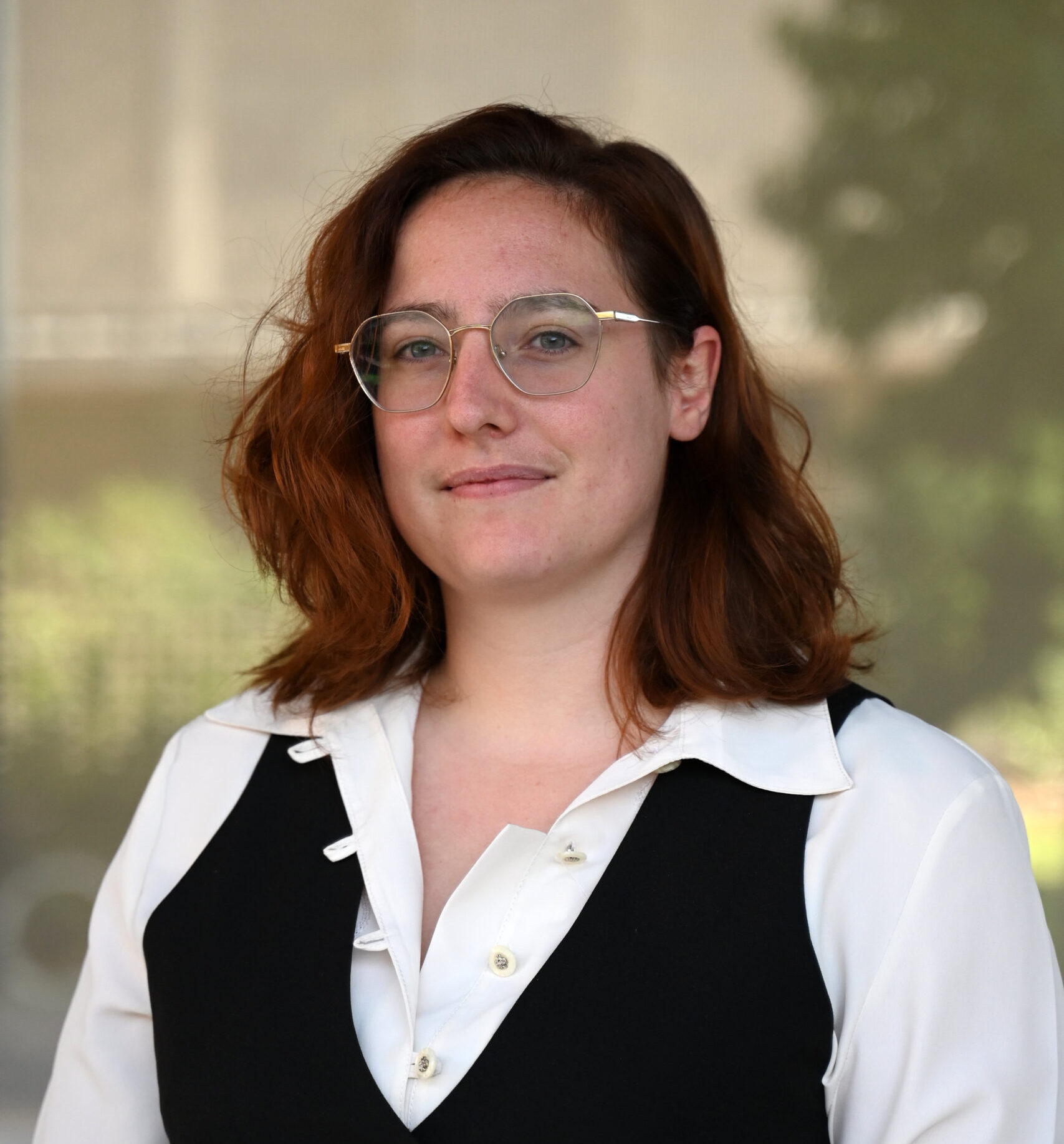Venue: Centre Broca
Nathalie Piette
Team: Organ-izing the Cells
IINS
Thesis supervisor: Vincent Studer
Title
Subcellular micropatterning to study synaptic connectivity
Asbtract
Micropatterning was initially employed to replicate and understand the influence of the extracellular matrix on cells and some of their components. Over the past decade, subcellular printing has emerged, enabling the study of protein interactions and their role in signaling pathways as well as in the formation of synaptic, immunological, or neuronal pathways.
The synaptic connection is mediated by synaptic adhesion proteins present on each side of the synapse. Due to the complexity of the synaptic environment and the lack of in vitro models to study synaptic connection in a biomimetic and controlled environment, the exact roles of these proteins in synaptogenesis remain uncertain. Subcellular protein printing presents a potential solution to address this gap. For this purpose, we have developed two biomimetic models based on protein printing: a first one using heterologous cells, providing insights into the interaction kinetics of protein pairs and linking them to their potential function. And a second one using primary neurons, allowing the formation of artificial synapses to study synaptic nano-organization during development.
The protein printing system PRIMO, commercialized by Alvéole, which is co-funding this thesis, is underutilized by neuroscientists. Besides these biological objectives, the industrial aim of this thesis is to develop methodologies and proofs of concept to demonstrate the advantages and feasibility of the PRIMO technology in neuroscience.
By coupling our first model, based on heterologous cells, with live-cell imaging techniques (sptPALM and FRAP), we differentiated interaction kinetics among various synaptic adhesion protein pairs and also for interactions with scaffold proteins. A labile interaction was observed for SynCAM1, known for its role in synaptic morphology. A strong and stable interaction was evident for Neuroligin1/Neurexine1β due to Neuroligin1’s dimerization, which is essential for synaptic functionality.
With the second model using primary hippocampal neurons, we demonstrated, in the presence of LRRTM2, the specific formation of artificial synapses. These hemi-synapses exhibited morphological and functional characteristics close to native synapses, including the presence of vesicles and spontaneous calcium activity. However, we were unable to form artificial postsynapses with Neurexine1β. Based on our observations and bibliographic analysis, we hypothesize that the postsynapse could be the initiating compartment for synaptogenesis.
In conclusion, this study demonstrates: (1) that subcellular printing is an excellent model to study synaptic connectivity and adhesion from both a functional and organizational perspective. (2) That models of hemi-synapses using micropatterning are more specific than previous models. (3) That the PRIMO system opens numerous perspectives in neuroscience through its quantitative printing capabilities.
Key words: Protein micropatterning – Synapses – Hemisynapses – Synaptic adhesion proteins – Diffusion- Trapping – Cellular Imaging – Fluorescence Imaging – Single Particle Tracking (SPT) – Fluorescence Recovery After Photobleaching (FRAP) – Electron microscopy
Jury
- Mr. STUDER, Vincent Directeur de recherche Directeur de thèse
- Mme. RENNER, Marianne Professeur des universités Rapporteur
- Mr. GABRIELE, Sylvain Directeur de recherche Rapporteur
- Mme. TOMBA, Caterina Chargée de recherche Examinateur
- Mr. THERY, Manuel Directeur de recherche Examinateur
- Mr. DUBOIN, Aurélien Ingénieur Alvéole Paris Membre invité
- Mr. THOUMINE, Olivier Directeur de recherche Membre invité


